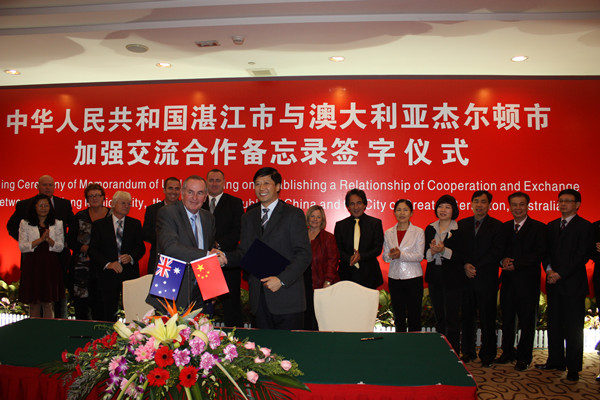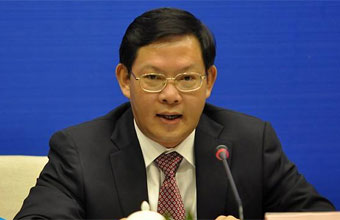Home> Sister Cities
Geraldton
 |
Geraldton is 370 kilometers north of Perth, capital of Western Australia (470,000 square kilometers). It borders the southeast of the Indian Ocean, and is 400 kilometers from the port of Fremantle, so it is an export port for ore in the southwest of Austria.
Geraldton covers an area of 13,000 square kilometers, and has a population of 37,000 and abundant natural resources.
Australia’s central and western region, including Geraldton, is generally recognized as one of the most potential development zones for natural resources in the world. It has abundant iron, gold, copper, navajoite, mica and uranium ore. In addition, the support infrastructure and stable investment arenas benefit investors.
As a prospective central city and portal of West Australia, Geraldton plays a core role in driving the economy of Australia’s central and western region.
The city connects with other Australian cities and other countries through ports covering air, sea and land.
The Australian federal government and Western Australian government have co-funded another deepwater port and industrial park in Oakajee (25 kilometers north of Geraldton) to vigorously develop port logistics and port industries.
Geraldton’s perfect infrastructure guarantees the prosperity and development of the export-driven economy in the central and western region.
As the business and administration center of the central and western region, Geraldton’s economy is facilitated by investment and construction in Geraldton port, Oakajee port and its industrial park, railway networks, wind power plants, solar power and geothermic power stations.
Geraldton not only leads in the development of renewable energy sources in Australia, but also is one of a few cities in the world that can develop and utilize five renewable resources including wind energy, wave energy, geothermal energy, solar energy and biological energy.
Walkaway – Australia’s second largest wind power plant – is situated in the south of the city. It owns 54 of the world’s largest wind turbines with a power supply capacity of 90 megawatts, reducing 400,000 tons of greenhouse gases (an amount equivalent to the annual quantity discharged by 80,000 cars). Another 195 wind turbines that were installed in phase Ⅱ in 2010 supply 500 megawatts.
Geraldton has numerous educational and scientific research institutions, such as the Durack Institute of Technology, a provider of vocational education and training related to natural resources exploitation and services; Geraldton Universities Centre and Batavia Coast Marine Institute that provide a degree education.
The education system integrating industries, universities and research brings advanced scientific payoffs, professionals and industrial advantages to the city.
As a main junction, where Australia’s national broadband network services vast regions of Western Australia and large numbers of projects of resource development are carried out, Geraldton is built into the center of information exchange, maintenance services and manpower resources with the infrastructure of a data transmission network.
Marine and agricultural resources are rich in Geraldton, and agriculture and aquaculture maintain the momentum of sustained development. Its aquatic products mainly include fish and freshwater lobster.
Geraldton is the largest exporter of Australian lobsters and a production area for the world’s top green and safe food and fiber.
The rich groundwater resources, advanced technology and transportation facilities are beneficial for grape cultivation and inland fisheries.
Geraldton is endowed with plain views of the ocean and a charming marine heritage. The tourist experience, combining Aboriginal cultures, modern art, endemic plants and animals, is the city’s brand.
An archipelago, 60 kilometers from Geraldton, is well known for its well-protected coral reef, Australian lobster and black pearls. It is a paradise of air travel, diving and ecotourism.
Geraldton has a Mediterranean climate with warm, rainy winters and hot, dry summers. Its annual average rainfall reaches 400 mm to 500 mm.

 Print
Print Mail
Mail 5G construction supports Zhanjiang's high-quality development
5G construction supports Zhanjiang's high-quality development
 Acting mayor inspects project construction in Xuwen, Leizhou
Acting mayor inspects project construction in Xuwen, Leizhou Zhanjiang island an "egret paradise"
Zhanjiang island an "egret paradise"  Dancing egrets add vitality to Xiashan
Dancing egrets add vitality to Xiashan